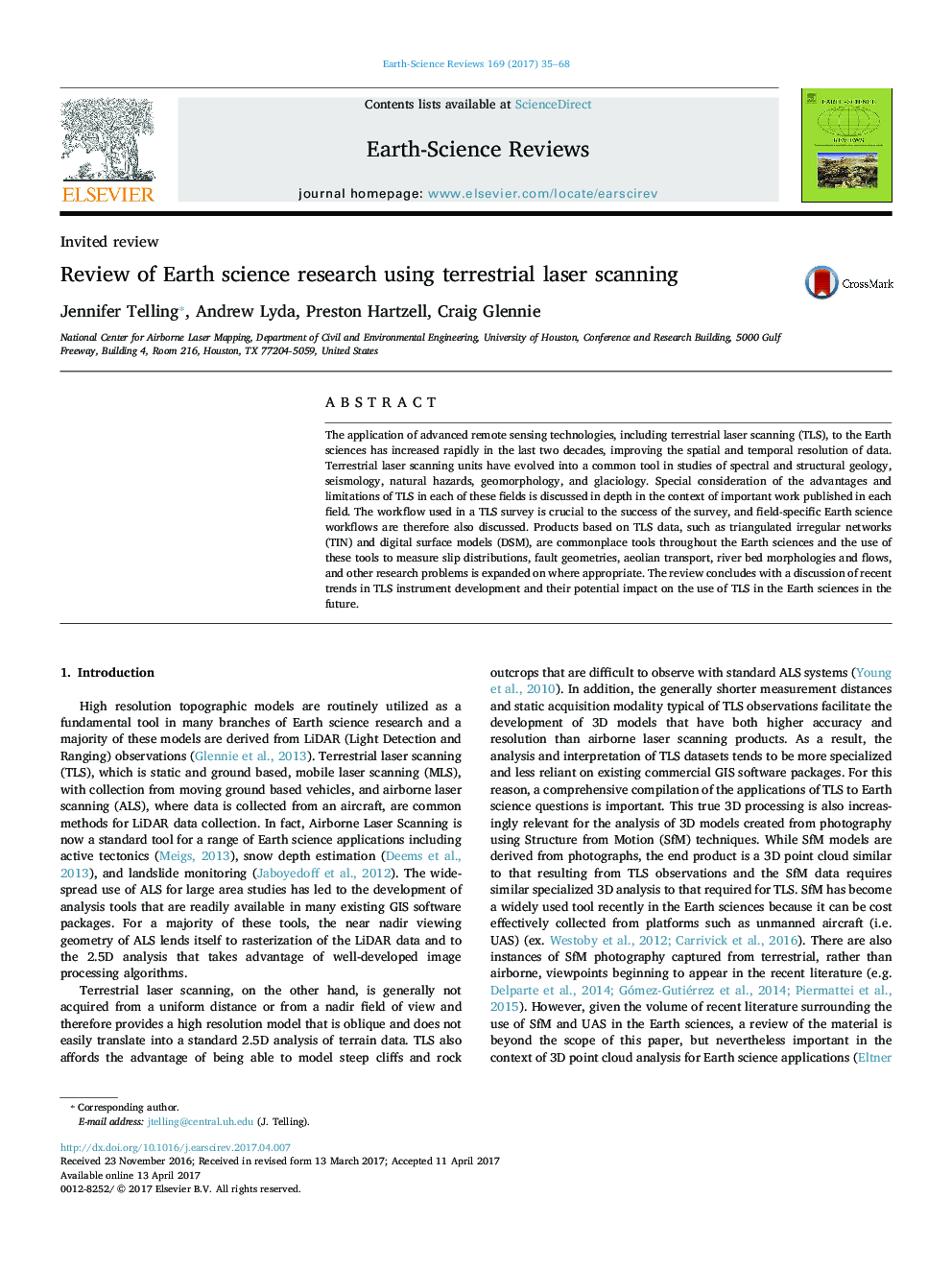| Article ID | Journal | Published Year | Pages | File Type |
|---|---|---|---|---|
| 5785123 | Earth-Science Reviews | 2017 | 34 Pages |
Abstract
The application of advanced remote sensing technologies, including terrestrial laser scanning (TLS), to the Earth sciences has increased rapidly in the last two decades, improving the spatial and temporal resolution of data. Terrestrial laser scanning units have evolved into a common tool in studies of spectral and structural geology, seismology, natural hazards, geomorphology, and glaciology. Special consideration of the advantages and limitations of TLS in each of these fields is discussed in depth in the context of important work published in each field. The workflow used in a TLS survey is crucial to the success of the survey, and field-specific Earth science workflows are therefore also discussed. Products based on TLS data, such as triangulated irregular networks (TIN) and digital surface models (DSM), are commonplace tools throughout the Earth sciences and the use of these tools to measure slip distributions, fault geometries, aeolian transport, river bed morphologies and flows, and other research problems is expanded on where appropriate. The review concludes with a discussion of recent trends in TLS instrument development and their potential impact on the use of TLS in the Earth sciences in the future.
Related Topics
Physical Sciences and Engineering
Earth and Planetary Sciences
Geology
Authors
Jennifer Telling, Andrew Lyda, Preston Hartzell, Craig Glennie,
